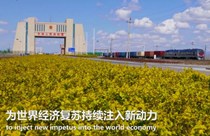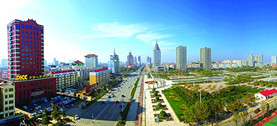Expanding domestic demand to tackle global value chain restructuring
Author : Pan An Source : Chinese Social Sciences Today 2023-04-03
Since 2008, impacted by a series of international events such as the international financial crisis, China-US economic and trade frictions, and the COVID-19 pandemic, global value chains have gradually taken on a trend of restructuring. This poses severe challenges for many countries including China in their attempts to deeply participate in the international division of labor. In face of these external shocks, it is noteworthy how China responds to the global value chain restructuring by expanding domestic demand.
Demand for value chain restructuring
A staunch supporter of the global value chain’s division of labor system, China is also a beneficiary of the system with its active participation. Currently, the restructuring of global value chains is mainly characterized by such development trends as nativization and diversification, which pose multiple realistic challenges to Chinese industries and even economic development.
For example, with the trend of nativization, the global value chains will tend to shrink. Manufacturing backflow hinders the upgrading of mid- and high-end chains. One of the motivations for the chain restructuring is the demand from developed countries, with the aim of solving the hollowing problem of internal industries and inhibiting the rise of developing countries. Taking the US as an example, the US government proposed the “re-industrialization” strategy after the outbreak of the global financial crisis in 2008. The strategy aimed to attract the manufacturing backflow through tax incentives, infrastructure improvement, and other measures. The CHIPS and Science Act, the Inflation Reduction Act and other acts, consecutively promulgated in 2022, all targeted at attracting the backflow of the electric vehicle manufacturing industry. Key production links such as those of native batteries, chips, and vehicles were involved. The backflow of advanced manufacturing industries vigorously promoted by the developed countries undoubtedly breaks with the original stable global value chains’ division of labor system. Consequently, the upgrading of mid- and high-end manufacturing industries in developing countries such as China was impeded.
Attracting superior factors and resources
As the world experiences unprecedented changes unseen in a century, China is taking active measures to implement a strategy of expanding domestic demand as a means of mitigating external risks and challenges. In theory, this strategy is closely linked to the restructuring of global value chains.
Under the new development paradigm, expanding domestic demand can smooth the flow of domestic economic circulation and promote effective division of labor in the domestic value chain. In this way, coordination between domestic and international value chains can be fostered and unity between the two can be realized.
For traditional manufacturing industries, the contraction of the global value chain will not pose a substantial threat to China in the short term, but the situation is significantly different for advanced manufacturing industries. By actively promoting the backflow of manufacturing industries, developed countries also attract the backflow of high-end factors and resources worldwide. For China to tackle the challenge, the key lies in enhancing its “attractiveness” of superior factors and resources and allowing the access of more supportive resources into China. Regarding this, the domestic market, driven by domestic demand, will continuously provide a fountainhead for it.
Supplying more mid- to high-end goods
Demand and supply are the two endogenous forces driving the market. The spread of the COVID-19 pandemic across the globe has led to the contraction of both international demand and domestic demand to varying degrees. As China optimized and adjusted its pandemic prevention and control measures, the contracted domestic demand is rapidly recovering in an orderly manner. In the future, China will fully tap the potential of domestic demand by boosting consumption in order to fully utilize the advantage of its super large-scale market. However, the current supply of mid- to high-end goods in China still cannot fully meet the people’s realistic needs for a better life, which put forward higher requirements for deepening the supply-side structural reform.
A successful example is the production of China’s first domestically-developed large passenger aircraft C919. From the establishment of Commercial Aircraft Corporation of China Ltd (COMAC) in 2008 to the delivery of the first C919 jet in 2022, the aircraft has witnessed the continuous restructuring of the global value chain over the past 14 years. It also demonstrated China’s strength in manufacturing which complies with the chain’s restructuring trend. The C919 made in China is undoubtedly a crystallization of the division of labor in the global value chain. It not only gathered many domestic high-tech product suppliers, but was also assisted by suppliers from European countries such as Germany, France, and the US. The C919 jet has already received more than 1000 orders from over 30 countries including Thailand and Germany, which truly utilizes global factors and market resources.
Pan An is an associate professor from the School of Economics at Zhongnan University of Economics and Law.
Ye Shengtao made Chinese fairy tales from a wilderness
Ye Shengtao (1894–1988) created the first collection of fairy tales in the history of Chinese children’s literature...
-
How northern ethnicities integrated into Chinese nation
2023-09-18
-
Mogao caves
2023-09-12
-
Mogao Grottoes as ‘a place of pilgrimage’
2023-09-12
-
Time-honored architectural traditions in China
2023-08-29
-
Disentangling the civilizational evolution of China
2023-08-28
-
AI ethics in science fiction
2023-08-23














 2011-2013 by www.cssn.cn. All Rights Reserved
2011-2013 by www.cssn.cn. All Rights Reserved